SITE PATH
ONE ENERGY FEED

SUBSCRIBE
CONNECT WITH US
News Filters
My biggest professional fear isn’t what you’d think. I’m not afraid of failure; that will always be a possibility. I’m not afraid of getting someone hurt; I’m confident that we have done everything we can to create safety controls and enable a safe culture. I’m not afraid of losing control of the company; that is a part of growth and making the company something bigger than me.
My biggest professional fear is losing touch with the front line.
The front line is where a company’s values and aspirations are put into action. The front line is the people who are creating product, who are interacting with customers and vendors – the people who are building, and who are maintaining. The front line is the company, and if I lose touch with front line, that will be the beginning of the end.
I worked for several companies before I decided to start One Energy. I worked through countless toxic environments. In every case, I believe the root cause of each company’s issues was that senior management was completely disconnected from the front line. I would sit in meetings with the CEO who proclaimed, “we will spare no price for safety” and “everyone is empowered to stop work for safety.” Then a few days later, I would be on site witnessing a Project Manager trying to overrule a crane superintendent, saying “go ahead and make the lift – it’s just a little over the weight limit.” The CEO thought he was running one company; the reality was that his organization was a different entity entirely.
One of our large suppliers offers a similar cautionary tale. I know the international founder and his original team well. They are some of the most impressive executives I have ever met, and they have built a great global company. But in doing so, they have lost touch with their front line. They have hired a series of local, country-specific executives, and in doing so they have lost their soul. One current local executive is an incompetent pompous individual who has the technical understanding of a goldfish. He does not embody the virtues of the leaders who spent decades building the company. He does not advance the product; nor does he build lasting relationships with customers. He acts as though the U.S. subsidiary is his company and a source of personal power. He has made dozens of decisions that hurt the company both in the U.S. and worldwide. He goes on tirades to try to prove he is right and in doing so, ignores the best interests of the company. To prove a point to me (his customer), he once insisted that a product warranty be moved from one contract to another. He was so blind by insisting he was right that he failed to notice that he was doubling the warranty liability for his company by duplicating the same limit in the new contract for the extended warranty that was in the original warranty. Essentially, he created $20MM in unnecessary new liability for his company to prove a point.
There is no way the global executives of this supplier know what is happening on their front line. They have lost touch, and their once-great company is quickly becoming an embarrassment that is destined to fail if they don’t make a major change soon.
Staying in touch and well aligned with the front line is the hardest part of my job. Most of the people on the front line at One Energy have very little tolerance for what I call executive puffery. They often tell me things I don’t want to hear, and frankly, they are not very good at the compliment sandwich. But these are the things all executives need to hear, and their candid, honest feedback is incredibly valuable.
One of the things we do to help me stay aligned with the status of One Energy’s front line is what we call “Pink Sheets.” I stole the idea from Admiral Hyman Rickover. The “Pinks” were the last carbon copy sheet from a work order in the nuclear navy, and every pink sheet made its way to the Admiral. While those in the chain of command could add comments to the sheets, they could not delete anything. So every single qualified frontline worker knew that their words would be read by the Admiral. And the Admiral knew, directly from the front line, how things were going.
Our Pink Sheets are filled out every Friday by everyone in the company and they ask the same four questions every week:
What did we do right this week?
What did we screw up this week?
What do we need to do better next week?
What is the single biggest threat to the company?
Those sheets annoy people, but they have solved more problems than I can count. I read every single one, sometimes I write back, and when action is needed, you better believe it is taken. Those sheets are my fail safe with the front line. They are candid, and they are an honest accounting of the week. And that is what executives need to stay grounded and in touch with the front line. They are just one of the tools I use every week to make sure I don’t lose touch and end up like the cautionary tales of my large supplier or former employer.
Fear is a great motivator. If more executives feared losing touch with the front line, we would have better companies, and we would have safer companies. I am afraid of losing touch with the front line, and I respectfully submit that fear, in this case, is a great thing.
Jereme Kent is the CEO at One Energy.

Ever wonder why One Energy turbines have round nacelles rather than the rectangular ones often seen in large wind farms?
That’s because of our generators! All turbines One Energy has installed to date have Permanent Magnet Direct Drive (sometimes called “PMDD”) generators. They contain magnets that create a rotating magnetic field.
This type of turbine takes advantage of a principle of magnetism: a magnetic field rotating around a wire creates an electric current.
🔗Today’s Wind Study homework questions focus on using math and equations to calculate currents and magnetic fields. We’ll post the answers on Friday!
And be sure to share this educational series on Facebook and Twitter!
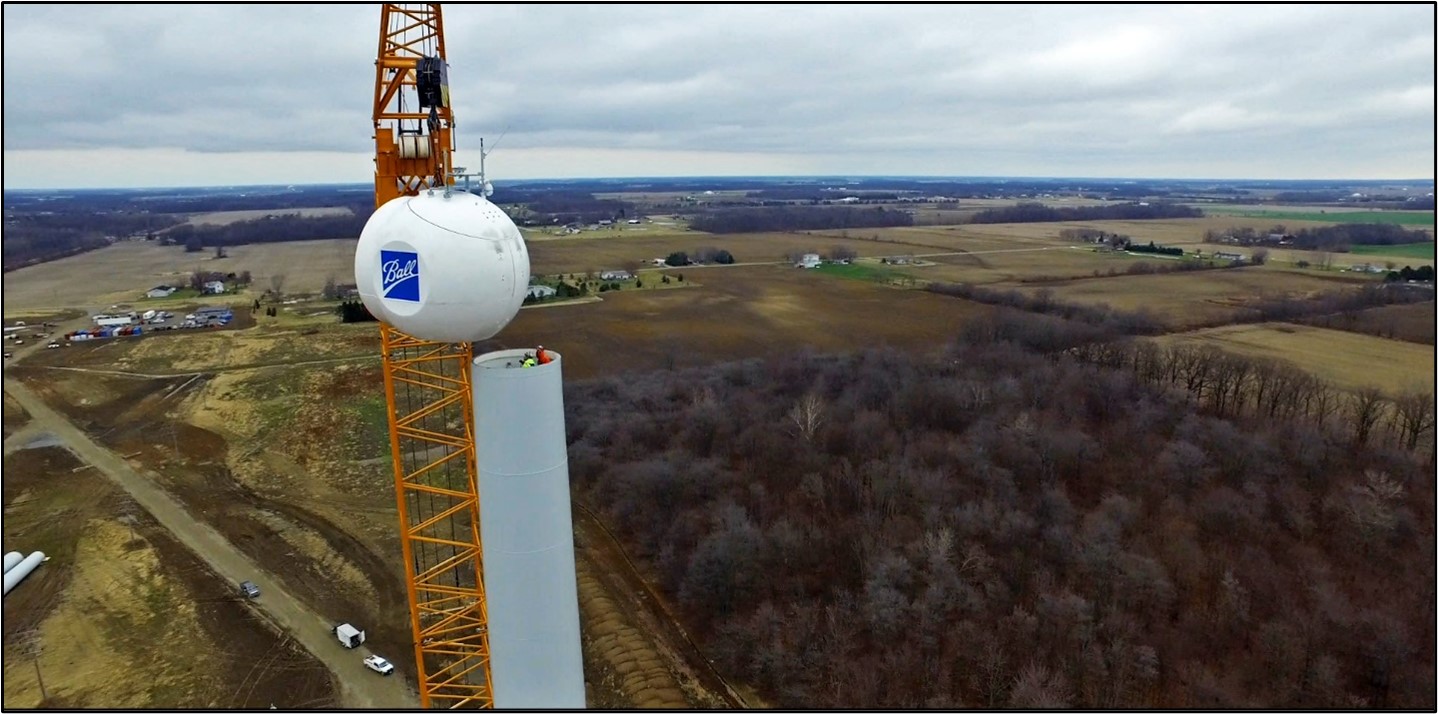

Let’s see how you stacked up against this week’s Wind Study answers!
Monday’s questions asked you to help us determine how best to stack wind turbine tower sections via crane during Wind for Industry project construction.
🔗 Check your work by downloading today’s homework answers!
Also find this educational series on Facebook and Twitter!
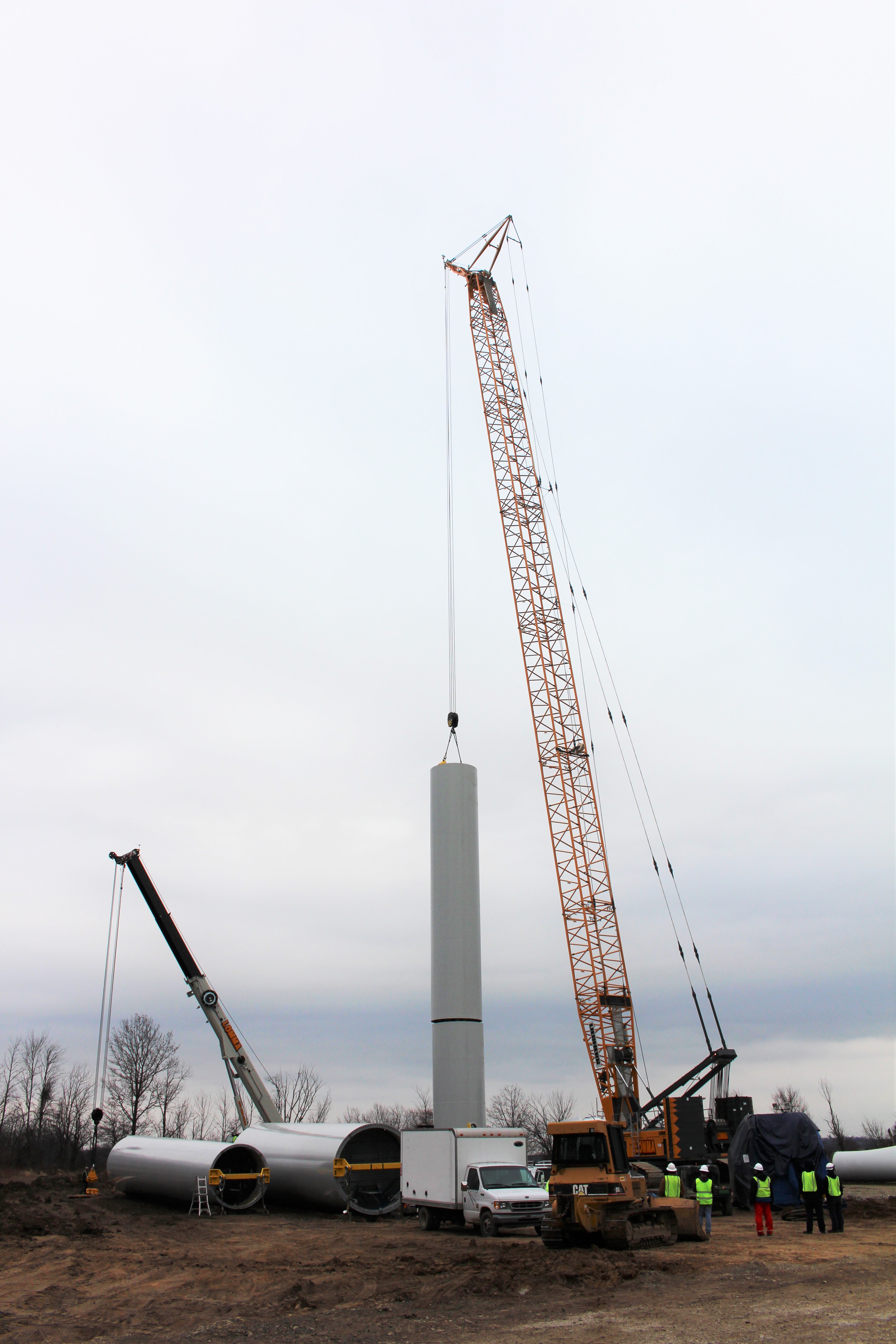

We at One Energy are no strangers to sunrises and sunsets – like at this Wind for Industry construction site!
This photo was captured during the beautiful end-of-day glow at a project located in Findlay, Ohio.
(If you look closely, three workers can be seen – securely tied off to points on the wind turbine’s generator.)
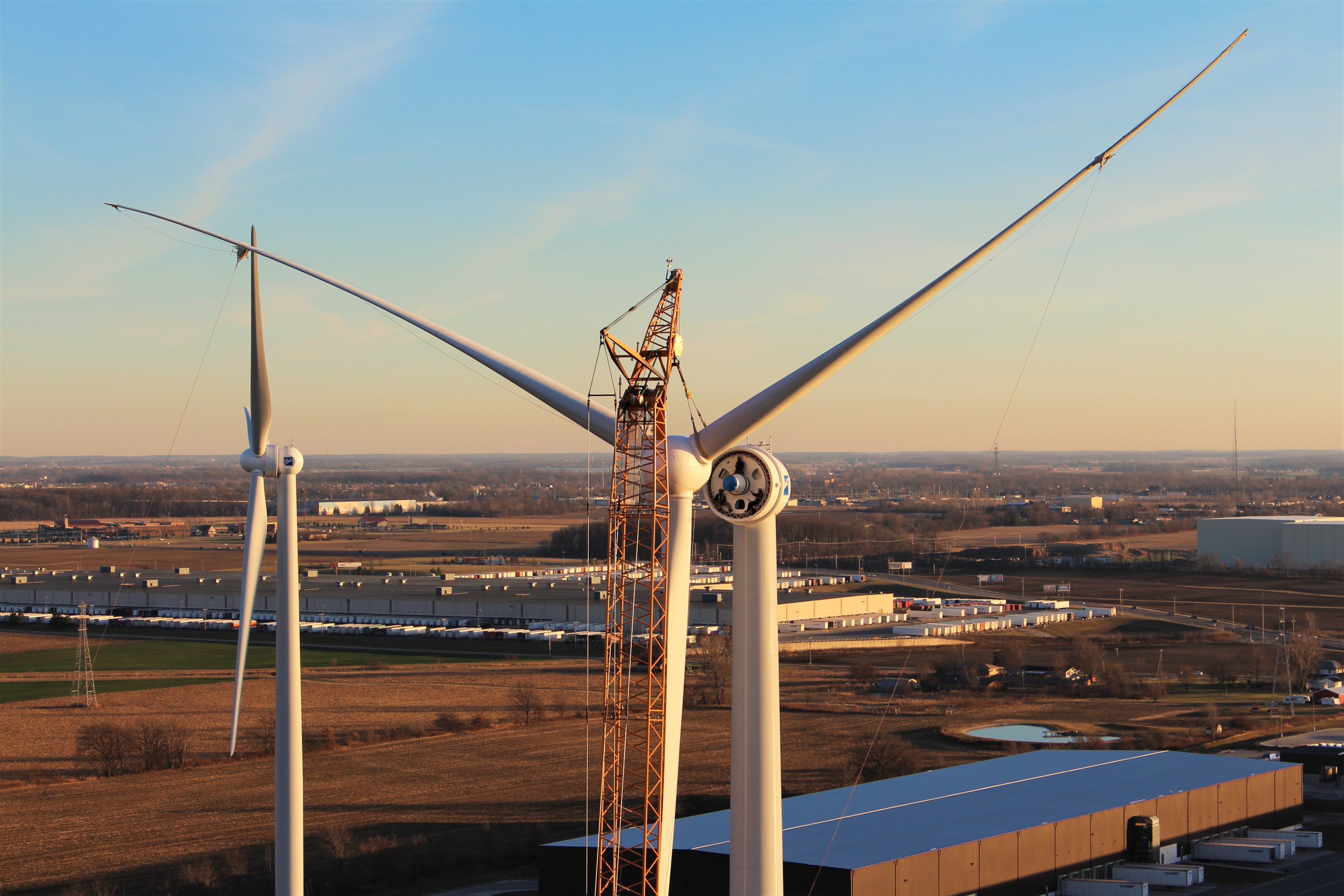

For today’s homework questions, help us coordinate wind turbine tower stacking!
Wind turbines are made up of different pieces, four of which come together as the “tower.” Read today’s word problem to find out how each tower section is carefully lifted into place with a crane and stacked on top of the previous section during construction – all without interfering with other components.
To help us build a tower, 🔗download today’s questions and try to find the answers before we publish them on Friday!
And be sure to share this educational series on Facebook and Twitter!
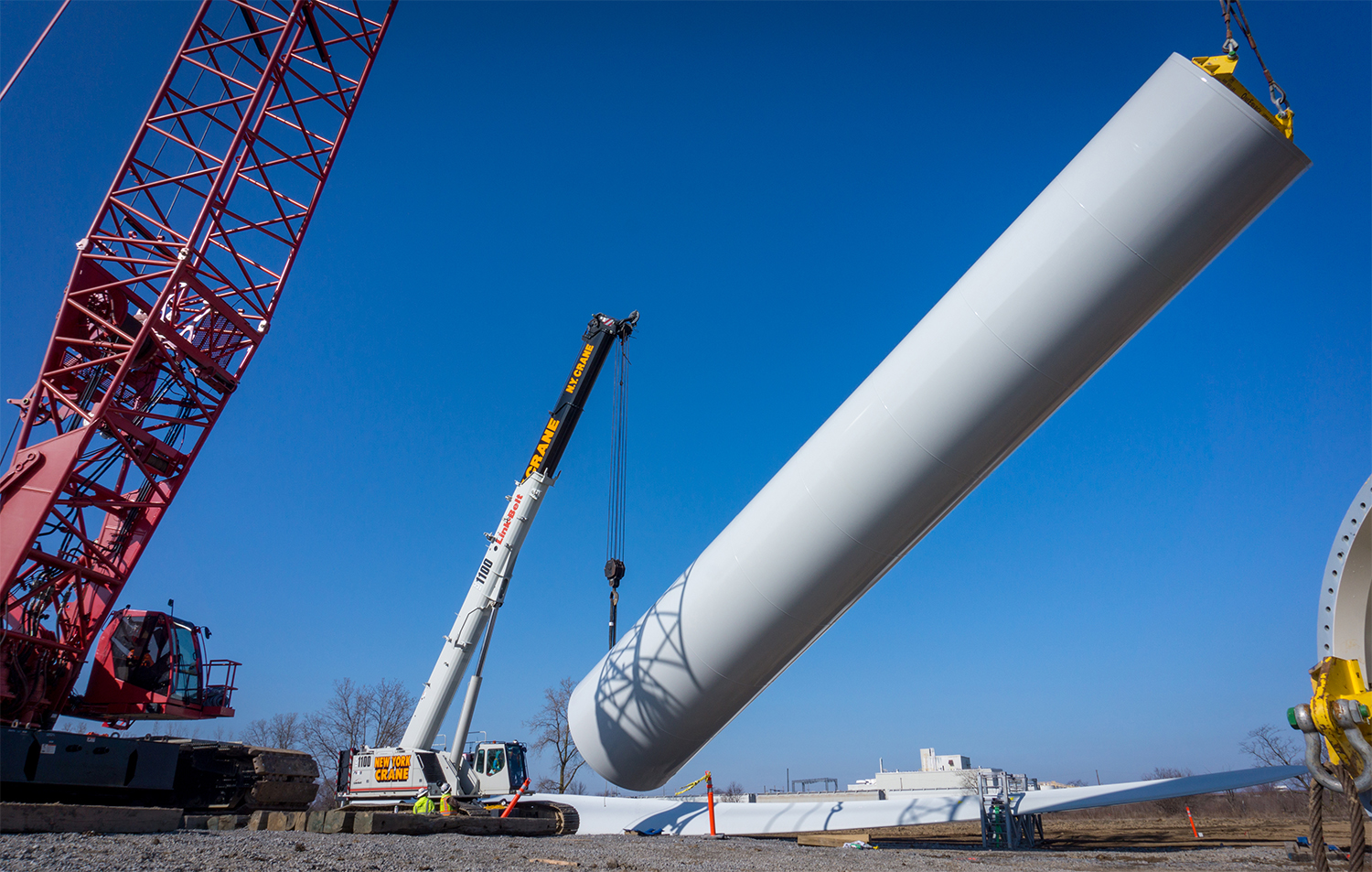

In a recent Science Short, Jessica explained the difference between power and energy. Now that we understand what energy is, let’s catch up with Field Engineer Intern Eathan to explore two types of energy: potential and kinetic!
In this episode, we’ll cover the First Law of Thermodynamics, which states that energy is always constant – it can’t be created or destroyed. Then we’ll dive into the concepts of potential and kinetic energy, with real-life examples to demonstrate each.
Ready to learn more about these types of energy? Jump in via the video below. (And tune in to our next Science Short, when we’ll be discussing additional types of energy!)
And as always, you can subscribe to our YouTube channel to catch all future Science Shorts, and share this educational series on Facebook and Instagram!

It’s Friday! Time to talk timing ⏰
On Monday, we asked for your help scheduling One Energy’s construction timeline and determining our crews’ work rates. Think you found the right answers to make sure our linear construction model operates smoothly?
🔗Download the answers to Monday’s homework questions here.
And click here for a refresher on the questions.
This educational series can also be found on Facebook and Twitter!
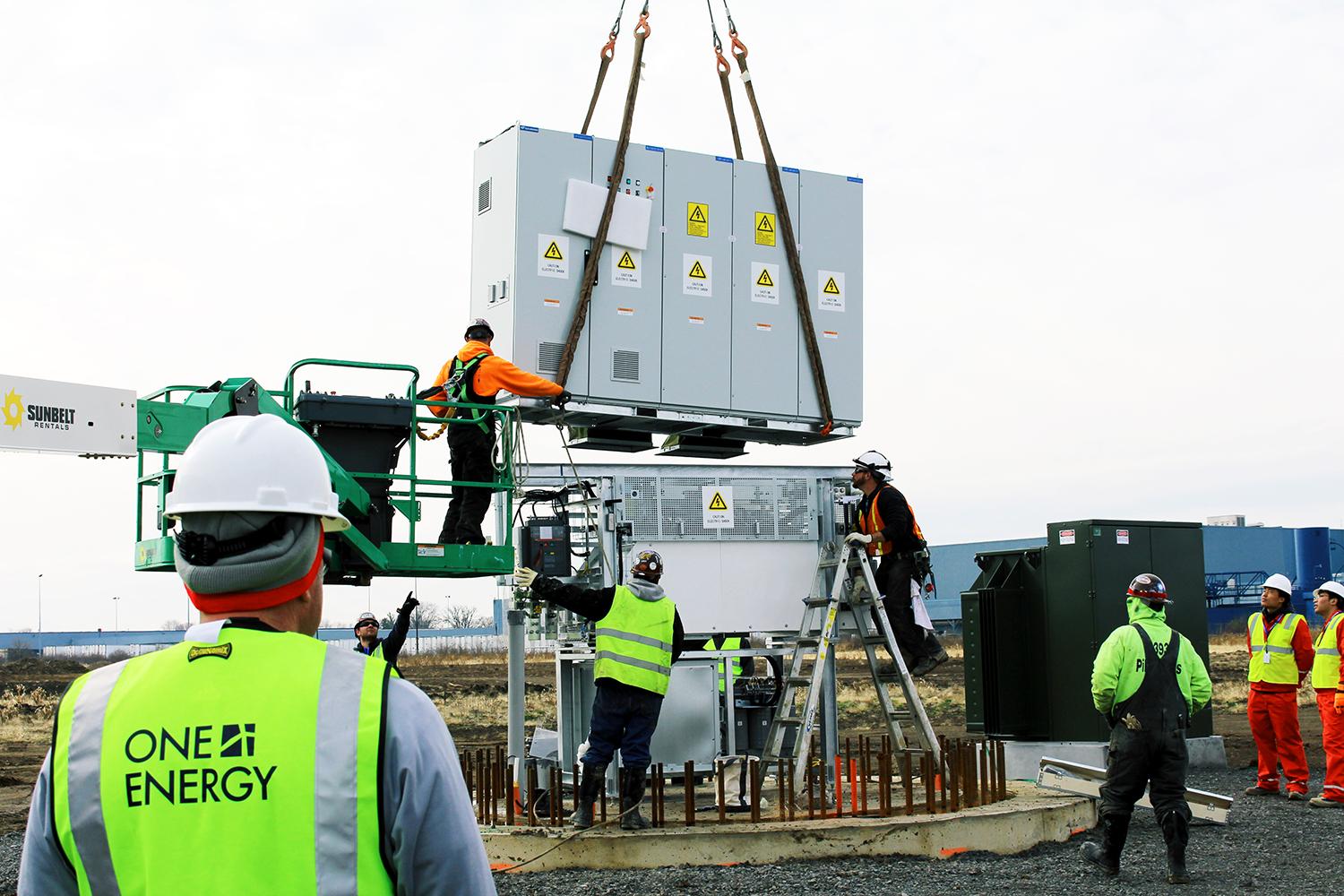

You do KNOT want to miss today’s episode of Technician Talks!
On the last episode, we introduced figure 8 knots. Today, we’re talking bowline knots – and how One Energy uses them for different construction activities, such as wind turbine erection.
Learn how to tie a bowline knot from One Energy Technician Kerry, who demonstrates variations, including a basic bowline, a bowline with a backup, and a bowline tied to a structure.
Technician Talks can also be found on our LinkedIn, Facebook, and Twitter feeds– and be sure to subscribe to our You Tube channel for more One Energy content!

Learning styles are interesting things. While often discussed within the context of children in the classroom, the fact is that learning doesn’t (or shouldn’t!) end with graduation, and the distinction of learning styles shouldn’t be ignored in adulthood. To be honest, I was probably in my thirties before I fully understood how much of a visual learner I am. Once I figured that out, I stopped wasting time trying to understand things in a non-visual way. What’s interesting is that it was my journey as a parent, not as a professional, that taught me so much about learning in a professional setting.
My husband and I have four children and there is no doubt they all came from the same gene pool – they have so many similarities! But as each of them progressed through school, I learned that despite all their likenesses, they each had a unique learning style. My challenge as a parent was twofold. On the one hand, I had to help the kids understand how they each learn best and how they could adapt to instructors with different teaching styles, especially those who did not communicate in a way that was effective for that particular child. On the other hand, I had to try to explain to their teachers how diverse my kids were – to articulate how each child learned best, and that he might need something different than his older sibling. I eventually understood that the best students academically are usually those with multiple learning styles – they can learn from just about any teacher. And the mark of truly great teachers is their ability to teach effectively to many different learning styles, which often means teaching the same concept in several different ways.
In recent decades, successful organizations have come to understand the importance of bringing a diverse group of people together on a team. There is incredible value specifically from the differences in thought and the variety of experiences within that team. When we bring such variety to the table, we maximize the opportunity to examine more possibilities, talk through more options, and come to better solutions. Our brains are all wired differently. We process information differently. Our life experiences give us different perspectives. We all approach and solve problems differently. And in all likelihood, we learn differently, too.
Learning should never end in the classroom. For any organization to thrive, learning must be constant. Clearly, individual learning is critical, but the importance of learning from others and through others’ experiences cannot be overstated. (In many ways, it is exponentially faster as well.) Learning from and with those that learn differently than you do – be it in a conference room, a huddle room, or a boardroom – brings great value. When you are leading an organization or group, and you want to maximize the value of each individual, consider that the synergy of conversation, discussion, and even the occasional argument is where the richness of diverse learning styles, thoughts, and experiences shines through. A well-designed collaborative meeting can achieve the learning needs of the 65% of the population that are primarily visual learners and the 30% that are aural learners – and probably pick up the verbal learners and some kinesthetic learners, too.
The ability to accommodate different learning styles within your team and to maximize individual learning curves can dramatically expedite problem-solving, contributing to faster growth and increased profitability. To facilitate rapid learning among a diverse group is, in my opinion, one of the most significant characteristics of a great leader. I am incredibly thankful to my four kids for everything I learned about learning, as a parent, as an entrepreneur, and as an executive.
Anne Bain is the Head of Accounting at One Energy.

Welcome to the North Findlay Wind Campus (NFWC)! This is the headquarters for One Energy and as you can see, we have some of our Wind for Industry projects right in our backyard.
There are 10 turbines within a 1.25-mile radius of our headquarters – all supplying power to local manufacturers. And we even have some of the turbine elements incorporated throughout our building itself – whether it’s our carpets in the size and shape of a turbine foundation and a crane pad, or even our railings (shown here), which are threaded with the same steel cable that’s used inside our turbines!
One Energy’s headquarters were intentionally designed to educate visitors – the exterior and interior elements are not only functional – they help tell our story!





